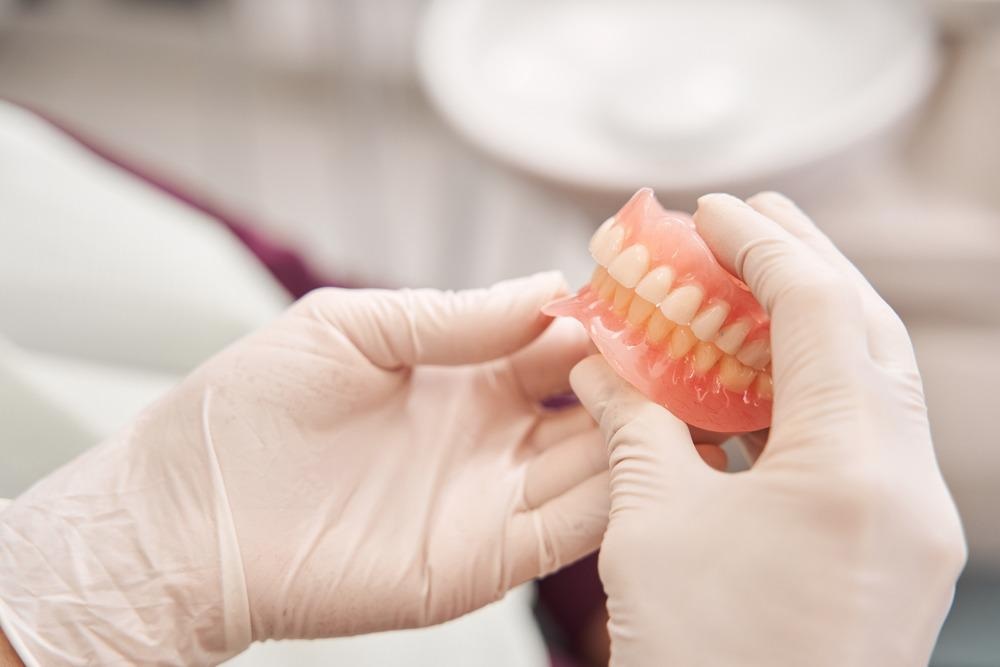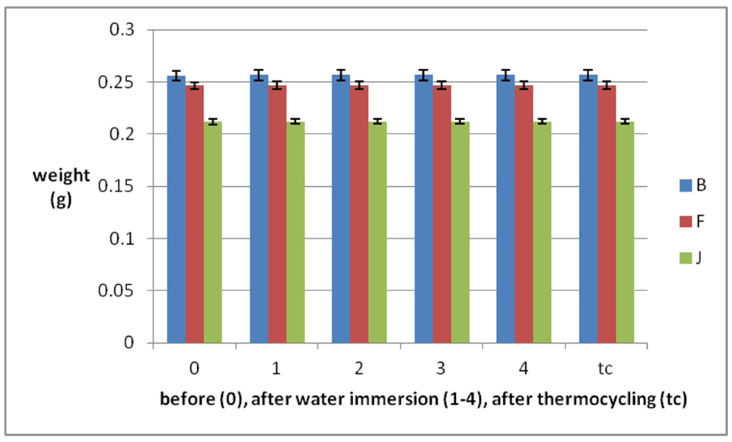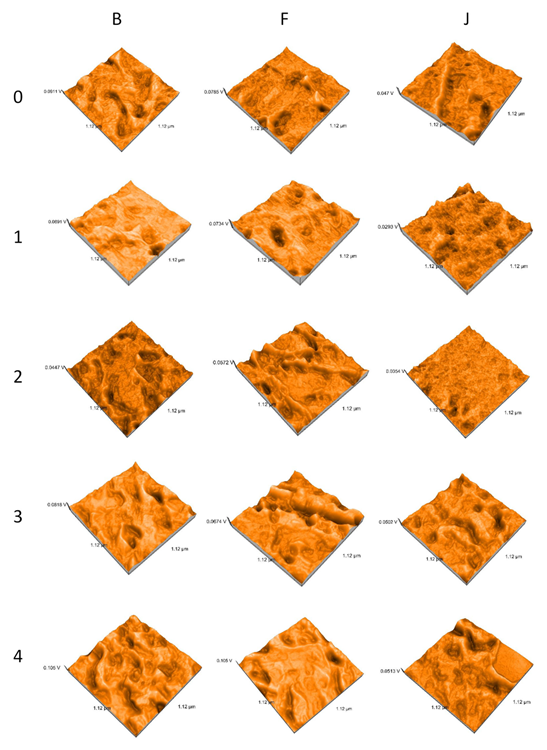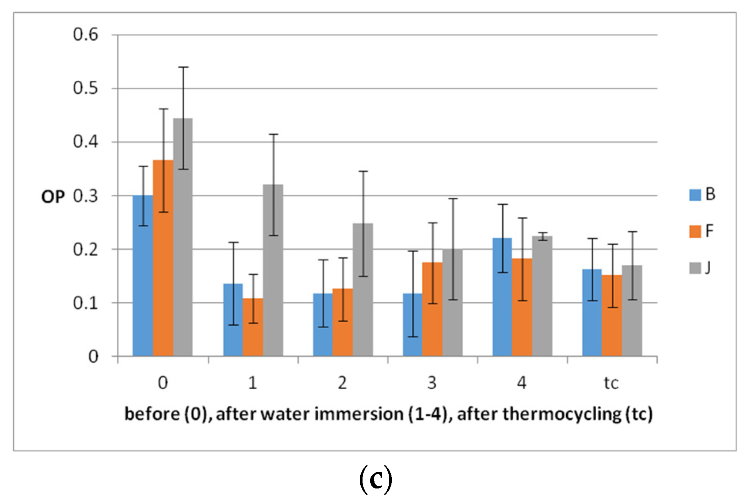Writing in the journal Polymers, a team of scientists from Victor Babeș University of Medicine and Pharmacy Timișoara, Politehnica University Timişoara, and the National Institute for Research and Development in Electrochemistry and Condensed Matter in Romania have collaborated on a paper investigating the surface properties, color stability, and microhardness of PEEK for dental applications.

Study: Surface Characteristics and Color Stability of Dental PEEK Related to Water Saturation and Thermal Cycling. Image Credit: Olena Yakobchuk/Shutterstock.com
Background to the Research
Advanced materials research has been central to the field of dentistry in the past few decades. Materials have been investigated for use in partial denture applications, with the most common materials employed for this purpose being metal alloys. Alloys possess the benefits of high strength and adequate friction and retention, but they can be hindered by corrosion instability.
Problems can occur with partial dentures, such as allergic reactions and topical disorders due to their direct contact with the oral mucosa. Moreover, they can be limited in terms of their aesthetics, as metal clasps can be visible on the buccal sides of molars.
Polyetheretherketone (PEEK) is a high-performance polymer that has been explored in recent years as a material for partial denture applications. Research has indicated that this polymer can address the issues with conventional metal alloys in prosthetic applications.
PEEK has been used extensively in orthopedic surgery and has increasingly found applications in prosthetic dentistry. This white, rigid, and radiolucent material possesses good thermal stability and mechanical properties, is biocompatible, non-toxic, and resistant to hydrolysis. Moreover, it possesses a low affinity for plaque and is non-allergic.

Weight variations of the samples during water immersion periods and thermocycling: average weight values with SD. Image Credit: Porojan, L et al., Polymers
Despite its good fracture resistance, however, this polymer is mechanically weak in its homogenous form. Dental clasps constructed from this material are weaker than their metal alloy counterparts. To overcome strength issues, composites of PEEK and materials such as ceramic fillers have been developed.
The aesthetic properties of these composites can be enhanced and provide benefits over traditional prosthetic materials for patients with high aesthetic requirements and can reduce allergic reactions. Likewise, surface modifications such as polishing of these composites can decrease or increase discoloration vulnerability in prosthetics, with rougher surfaces more likely to stain. Additionally, surface roughness can cause discomfort to patients.
Due to the importance and potential of PEEK and PEEK composites for prosthetic dentistry, a thorough characterization of their properties and an understanding of the long-term performance of these materials is needed in the field of dental science.
The Paper
The paper in the journal Polymers has sought to elucidate the color stability, surface characteristics, and microhardness of PEEK materials in relation to in vitro aging and water saturation. Custom modified and unmodified samples of varied materials were evaluated in the research.
The materials studied were BioHPP, Juvora Medical PEEK, and Finoframe PEEK. All three materials are commercially available products used in the field of prosthetic dentistry. BioHPP is a composite reinforced PEEK/ceramic material, whereas the other two materials are constructed of 100% PEEK.
Forty-eight rectangular samples were prepared for evaluation. Prepared specimens were then immersed in distilled water for 28 days at 37 oC and then subjected to 10,000 thermal cycles to age them. After this process, the samples were analyzed using different methods.
A contact profilometer was employed to analyze the surface characteristics of the prepared samples. AFM was used to characterize the nanostructured topography of the materials. A micro-hardness tester was used to perform Vickers hardness measurements. The sample’s color changes were observed and calculated at regular weekly intervals.

3D reconstructions of AFM images. Image Credit: Porojan, L et al., Polymers
Study Findings
The results of the study demonstrated the performance of the different materials, revealing their suitability as dental prosthetic materials. Modified PEEK materials possess better qualities than their unmodified counterparts due to the presence of ceramic fillers.
After immersion for a week, all samples reached water saturation, with no notable difference between them. Microhardness is reduced by water saturation. The modified PEEK material was most affected by this. After thermocycling, microroughness was significantly increased. No notable differences between samples with respect to microroughness were observed.
After aging, the reinforced PEEK material displayed the least modification in terms of nanosurface roughness and topography. These properties were within clinical limits. Color changes after water immersion of four weeks and a year of simulated aging were within acceptable limits, varying from slight to extremely slight, demonstrating the suitability of PEEK-based prosthetic materials for aesthetic purposes.

Mean optical parameters values of the samples with SD before each week of water immersion (0), after (1–4), and after thermocycling: (a) TP, (b) CR, and (c) OP. Image Credit: Porojan, L et al., Polymers
The authors have stated that the study is limited by its narrow choice of materials and limited factors studied. Therefore, they have stated that future studies should investigate the aging behavior of this class of dental prosthetic materials by studying the complete oral environment.
Further Reading
Porojan, L et al. (2022) Surface Characteristics and Color Stability of Dental PEEK Related to Water Saturation and Thermal Cycling Polymers 14(11) 2144 [online] mdpi.com. Available at: https://www.mdpi.com/2073-4360/14/11/2144
Disclaimer: The views expressed here are those of the author expressed in their private capacity and do not necessarily represent the views of AZoM.com Limited T/A AZoNetwork the owner and operator of this website. This disclaimer forms part of the Terms and conditions of use of this website.